O. Glenn Aiken, my beloved father, is in my heart today. Emotions began to rise when we sang the hymn “What Wondrous Love Is This” in church this morning. This was one of the songs my sister selected to be performed at my father’s memorial service. Then, to stir my memories even more, the second hymn was “Jesus Walked This Lonesome Valley”. This song I learned when I was in junior high school and O. Glenn Aiken was my teacher and choral director.
I could share some of my most inner feelings with Dad. We worked closely together on many projects at home and in the community. I give credit to Dad for being such a strong role model to me and I miss him greatly.
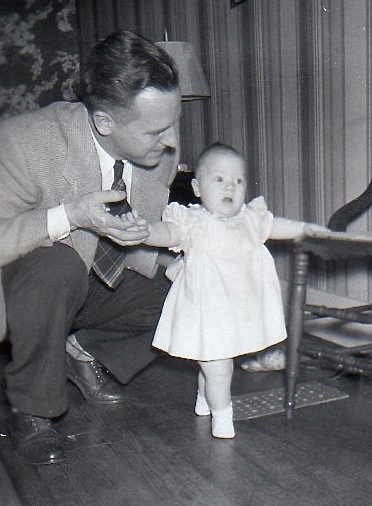
As a child I could understand his speech better than most people, and through our conversations my language development took hold. Dad was one of the easiest persons for me to understand, once he realized I needed to speechread. I’m sure he could identify with my speech differences since at times he had a tendency to stutter. However, he didn’t stutter when he was singing. In his younger years, he sang tenor but later in life he tended to sing baritone. Whether it was tenor or baritone, he sang with confidence. His voice was full and rich. I can only imagine how crushed he (and my mom) must have been when they learned I had a severe hearing loss. For them, music was their world and it also became mine – though limited to low frequencies – until the progressive loss left me profoundly deaf in my early twenties.
Dad was short and sturdy. He was a perfectionist and a workaholic. He was stubborn and never used his first name, Oscar. He detested the name because he didn’t want to have the same name as a mule. For this reason, he was known as O. Glenn Aiken. He was active in our small, rural community: Lions Club, supervisors, Boy Scouts. He loved his family and especially his grandchildren.
Dad encouraged his students at Otto-Eldred Jr. Sr. High School to reach their highest level of potential. As long as a person had the desire to be part of Dad’s choruses, he gave them an opportunity to sing, regardless of their musical skills.
Dad’s students participated in district, regional, and state choruses in Pennsylvania. He also had summer music programs where community members performed such musicals as “The Sound of Music”, “West Side Story”, and others. I spent hours with Dad as we set up for the performances, carried heavy risers and secured background props. We loved working side-by-side. Some summers he took high school students from various schools in western Pennsylvania and New York State on musical tours to South America and the Caribbean Islands, back in the 1960’s before the common practice of such was done in many schools. This was not a small feat for a small school and where many students were financially deprived.
In addition to school music, Dad and Mom established an exceptional music program in our small community church, the United Methodist Church of Duke Center. Upon retirement, my parents moved to Arizona and continued to be active by creating choruses in the retirement communities where they resided.
About a month before Dad passed away, I showed up unannounced for a visit at the care facility where he lived. By this time he was blind and totally depended on caregivers to meet all his needs. We talked, sat outside in the sun, and after lunch the residents were involved in music. That day, everyone was startled as Dad unexpectedly sang, “Swing Low, Sweet Chariot” in his clear tenor voice. It had been a long time since anyone had heard him sing. Many of the other residents joined in as Dad continued to sing and directed with his left arm. This was my last visit with Dad and memories I will forever hold dear.
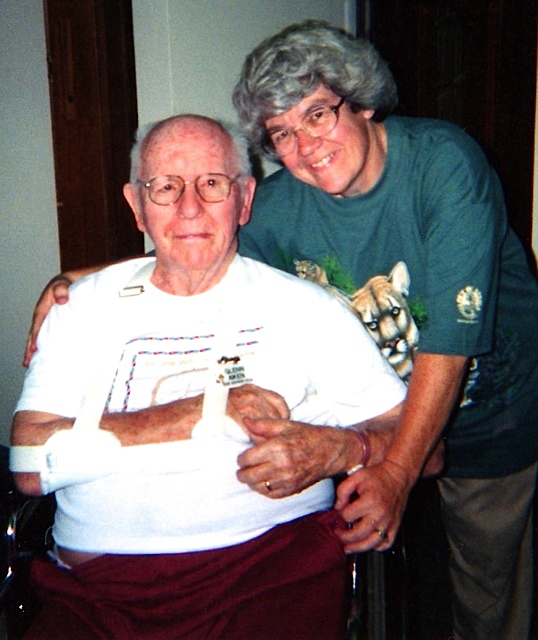
But today, he sang again – through the people at my church. All the verses for “What Wondrous Love Is This” are moving but the last stanza left me numb and rather choked up.
And when from death I’m free,
I’ll sing and joyful be;
And through eternity,
I’ll sing on, I’ll sing on;
And through eternity,
I’ll sing on…
Yes, I know O. Glenn Aiken sings on in the lives of his former students, church choir members, members of his retirement community choruses, and churches around the world where some of his favorite hymns are sung. He sings on in the lives of his children and grandchildren. And today, he definitely sang on as I visualized a peaceful expression on his face and felt his vibrant voice in my heart while the congregation sang “What Wondrous Love Is This” ~ a hymn my father loved.

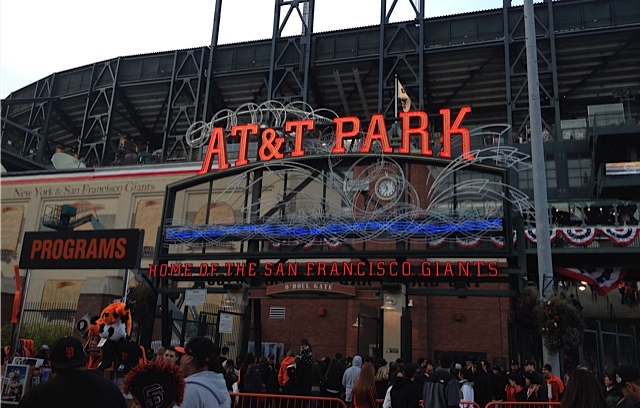
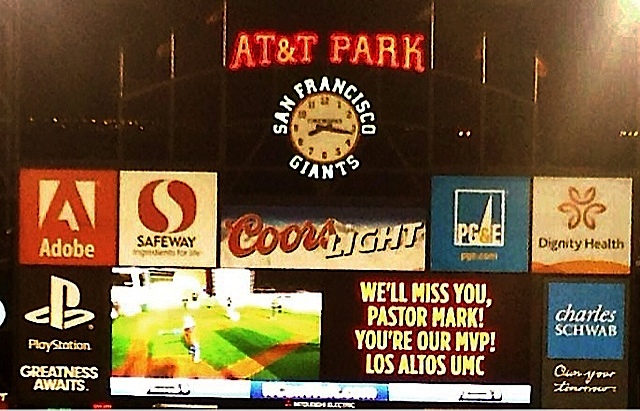
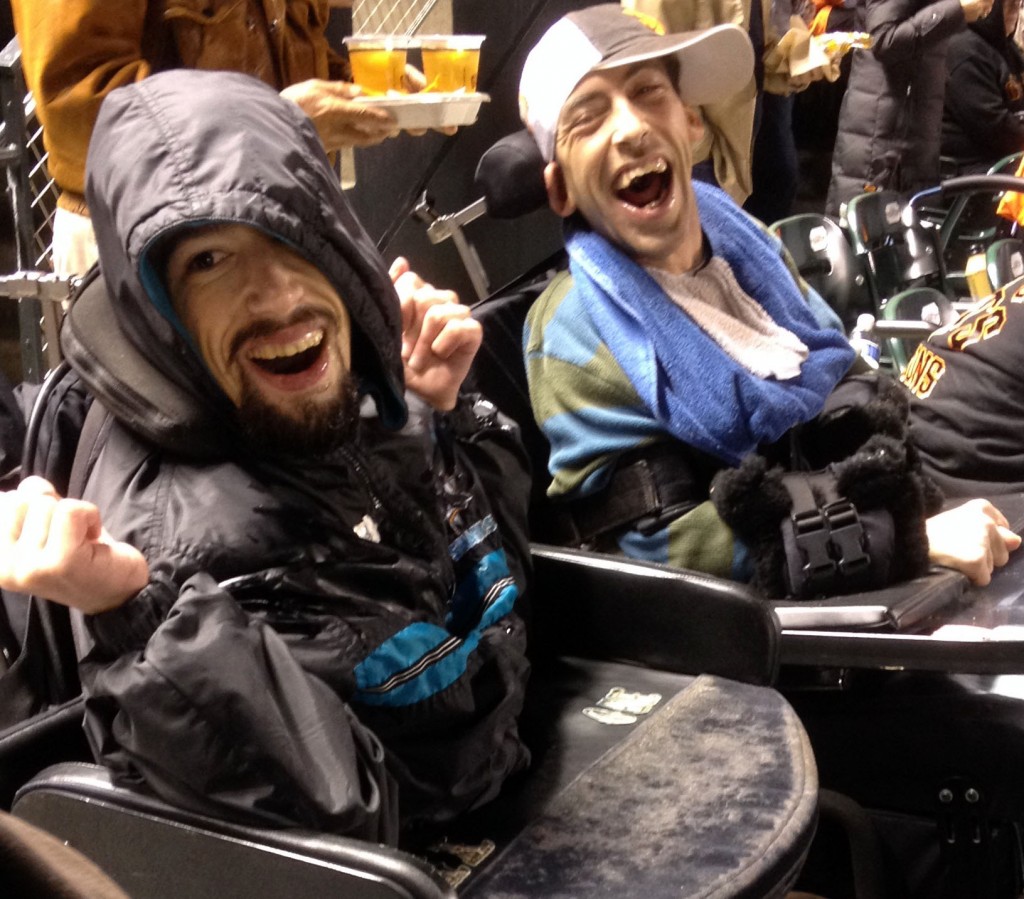
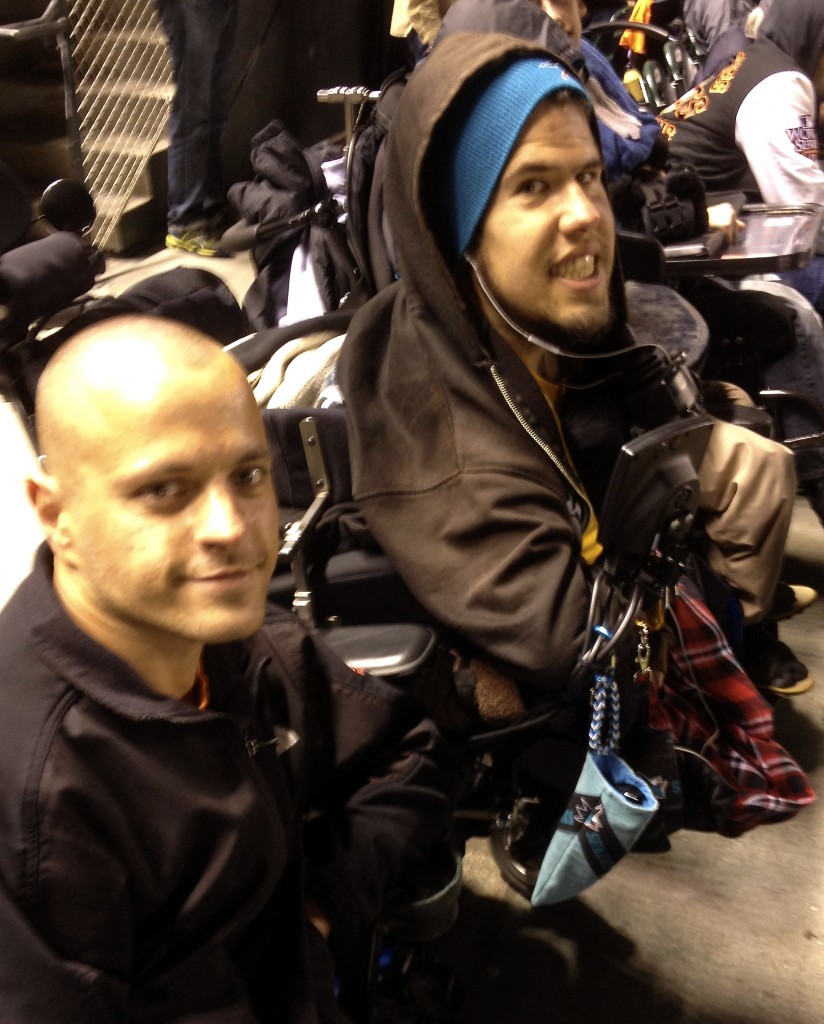
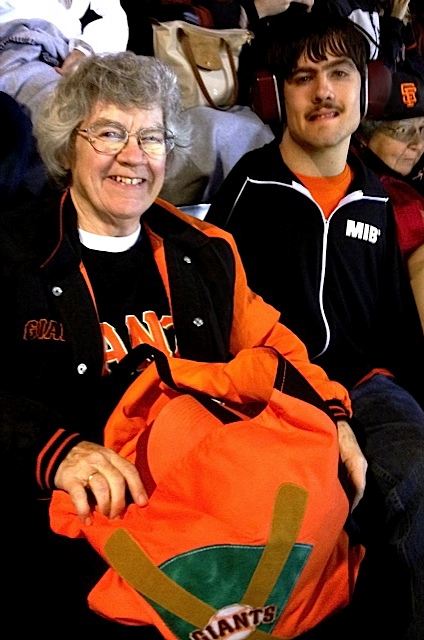




















































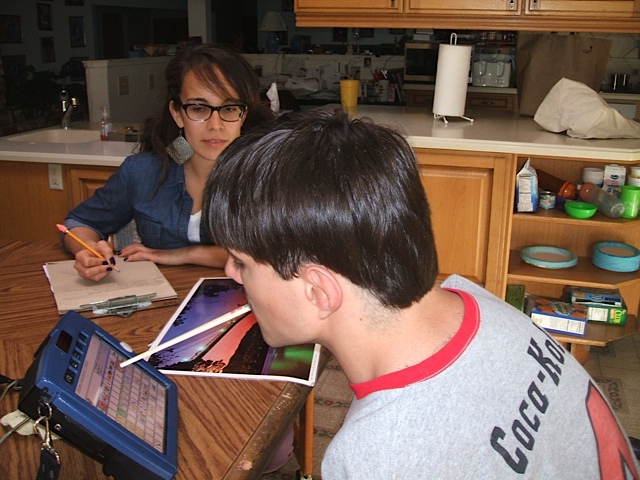
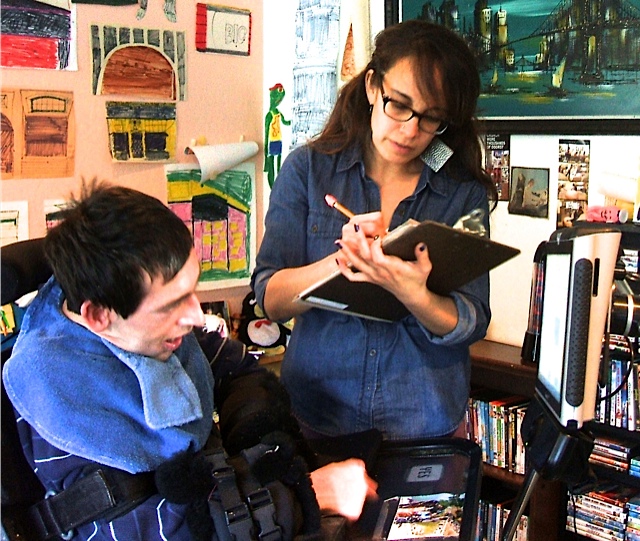 The meeting began with BCTAC members giving orders for the ice cream “dinner”.
The meeting began with BCTAC members giving orders for the ice cream “dinner”.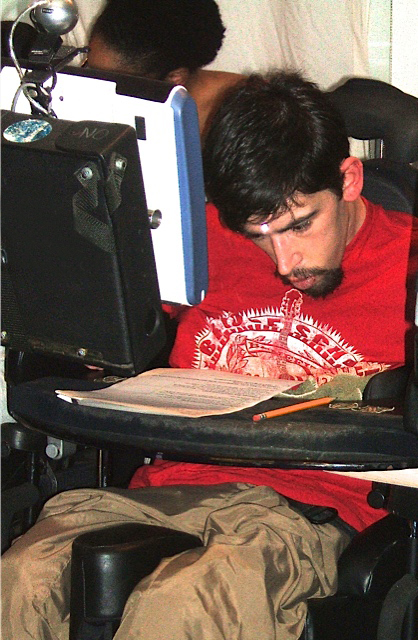
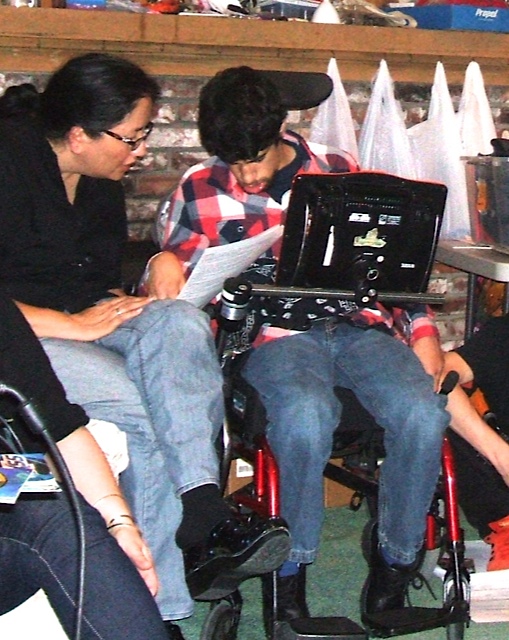
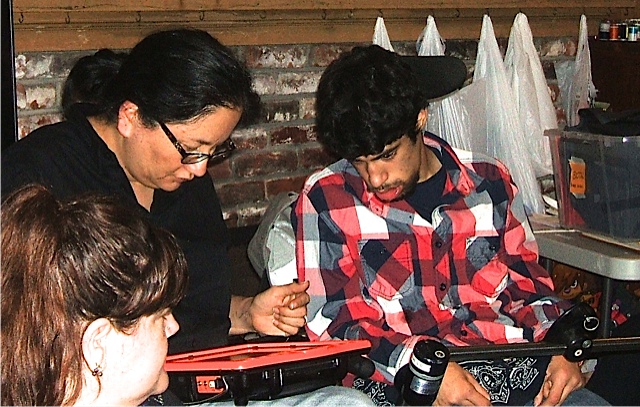
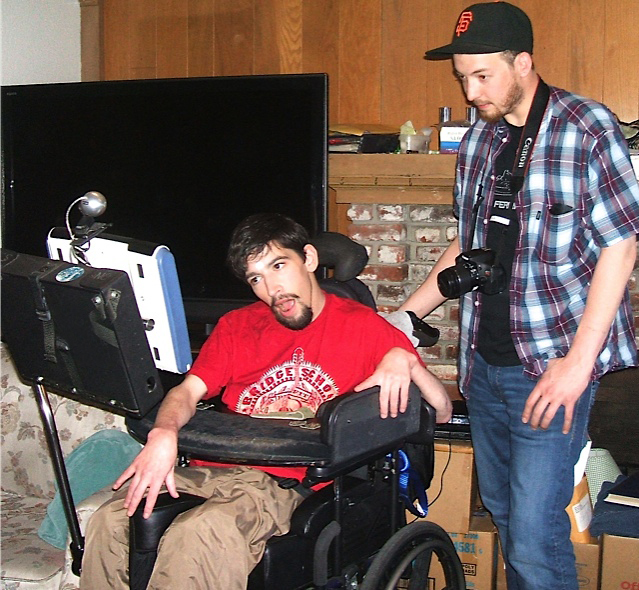
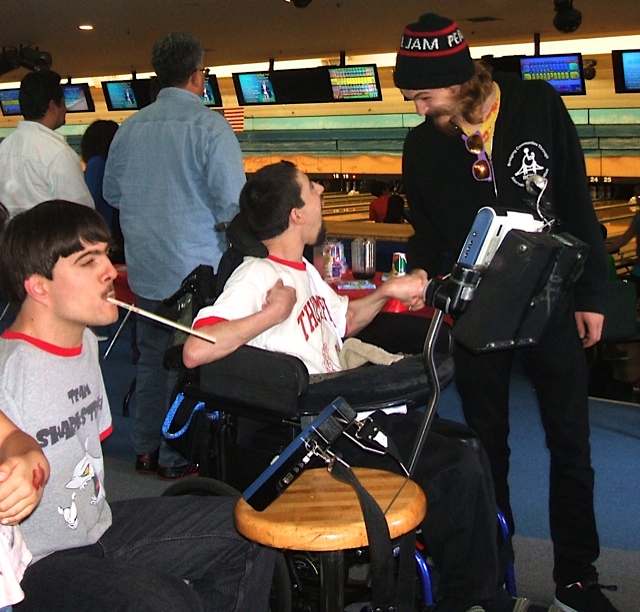
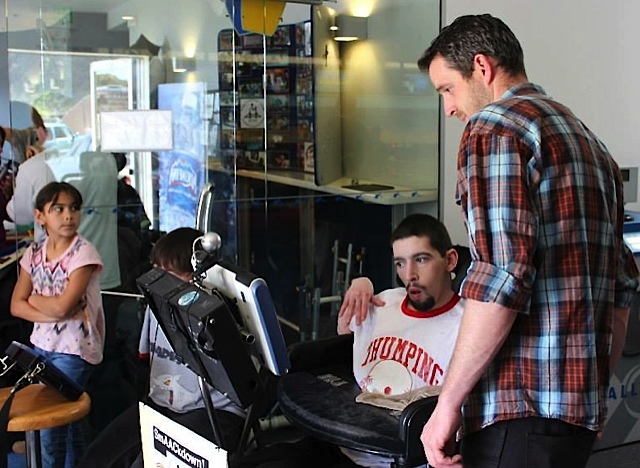
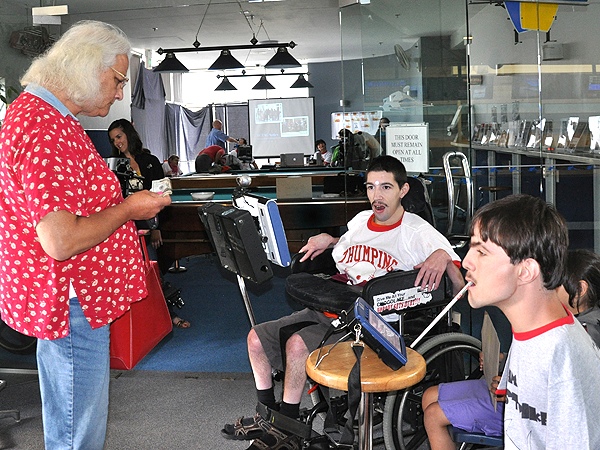 The bowl-a-thon day is here. Ben and Kolya had the job of greeting guests. Ben is using his
The bowl-a-thon day is here. Ben and Kolya had the job of greeting guests. Ben is using his 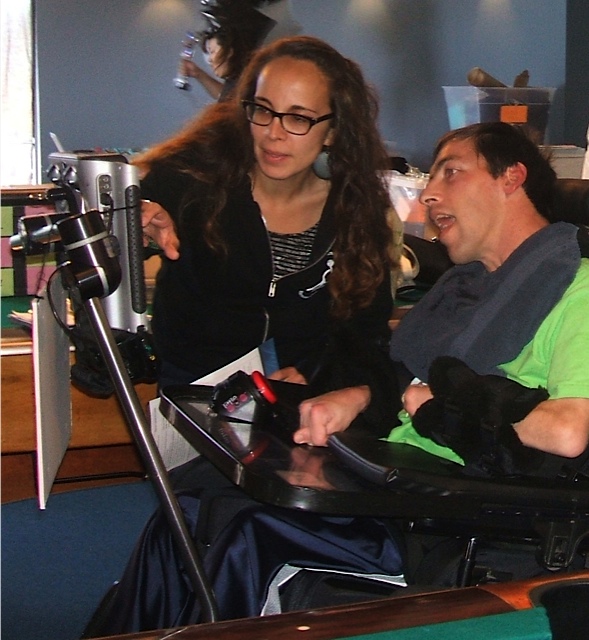
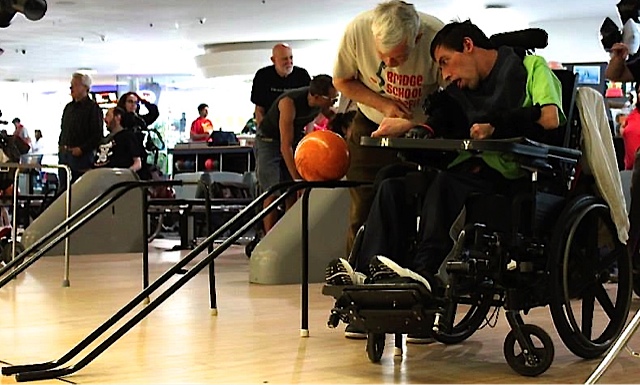
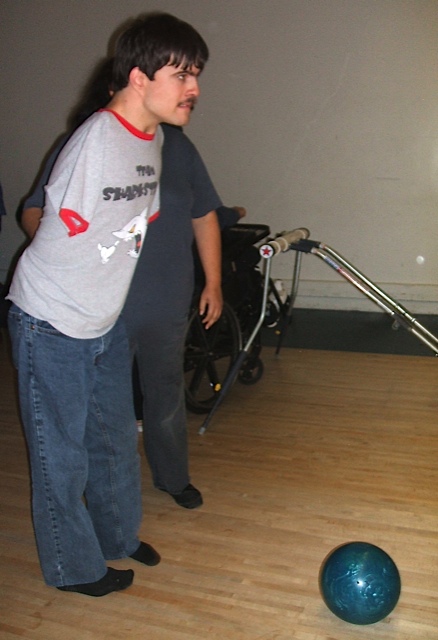
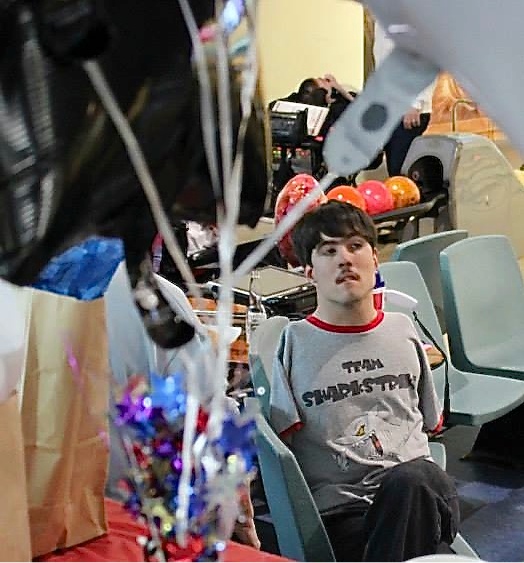
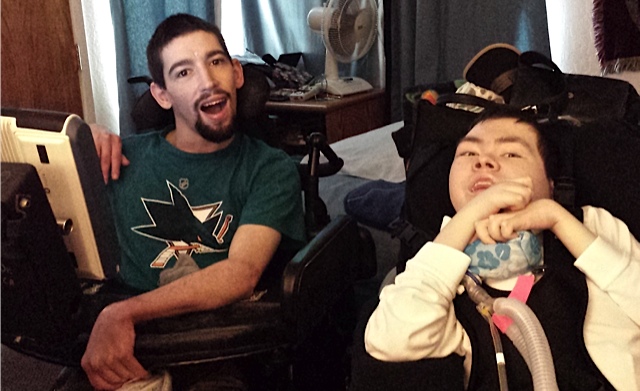
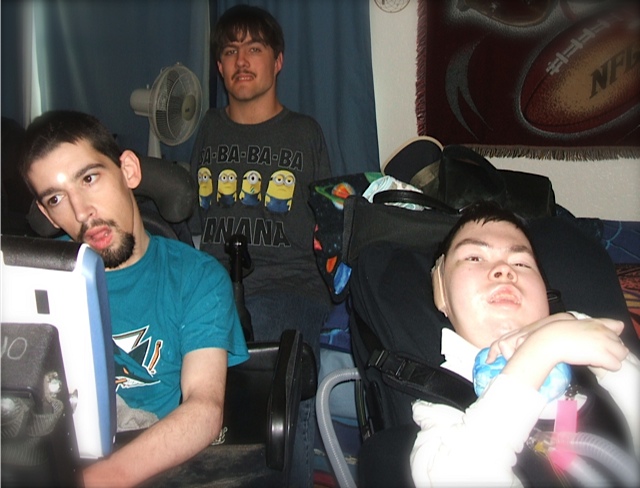 One bowler, Patrick, came all the way from Alaska. He doubled up his trip and had some surgery done at Stanford Medical Center after the bowl-a-thon. Once he was discharged and before returning home, his family came by the house to hang out with his AAC friends. Here he is in Ben’s room as they visit.
One bowler, Patrick, came all the way from Alaska. He doubled up his trip and had some surgery done at Stanford Medical Center after the bowl-a-thon. Once he was discharged and before returning home, his family came by the house to hang out with his AAC friends. Here he is in Ben’s room as they visit.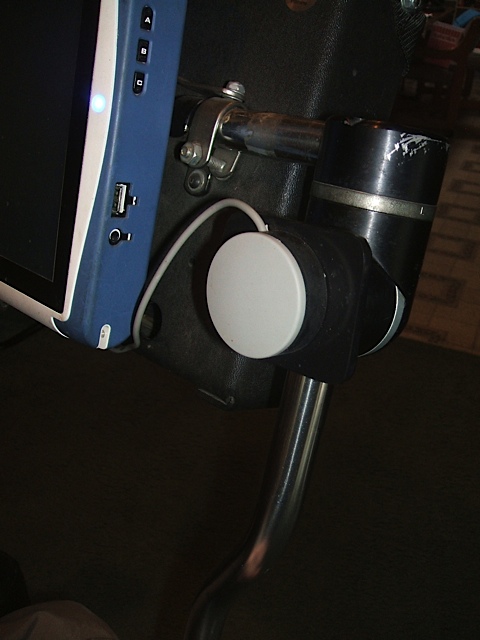 This photo show a gray switch that is secured to Ben’s
This photo show a gray switch that is secured to Ben’s 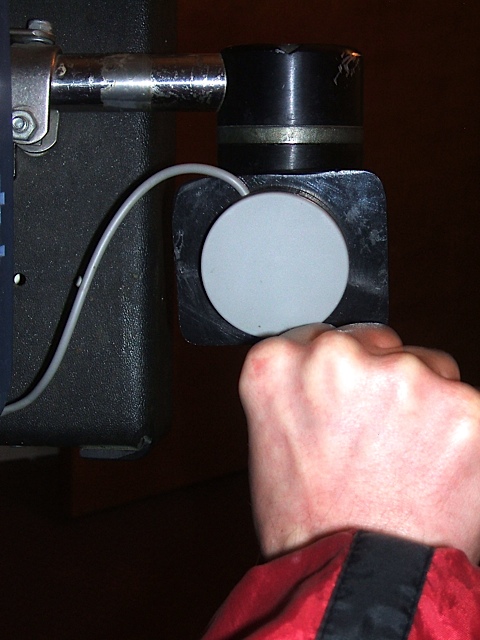
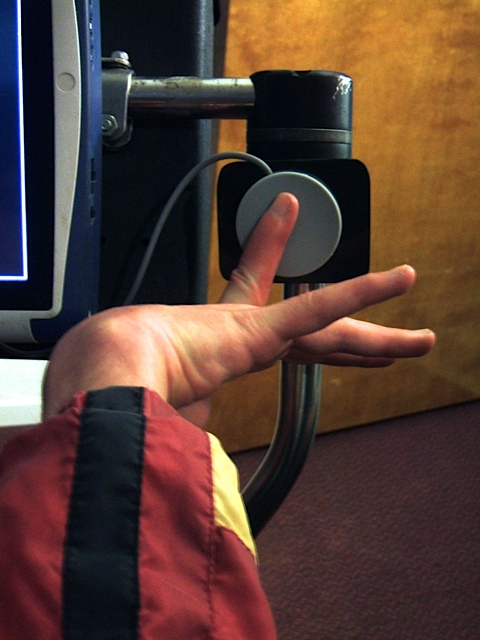
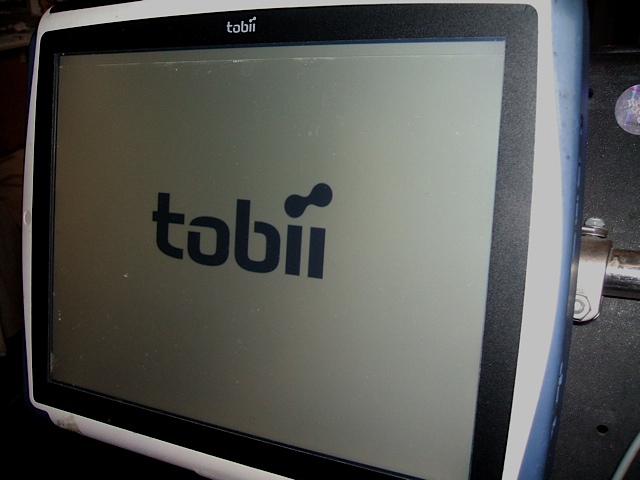
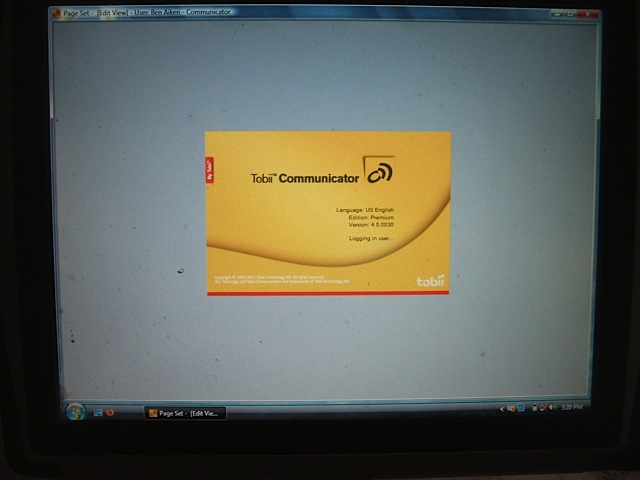
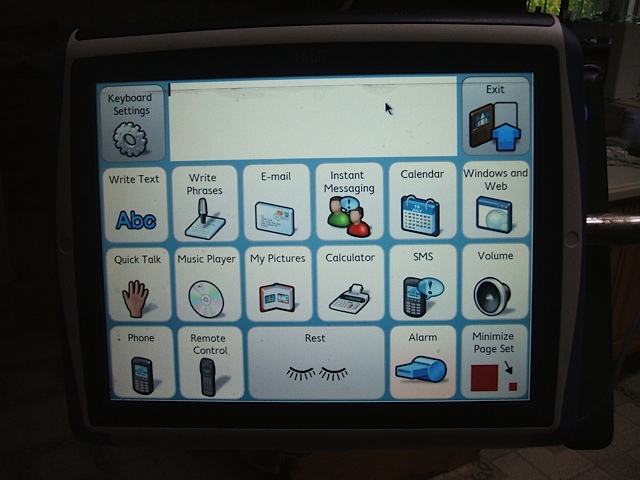

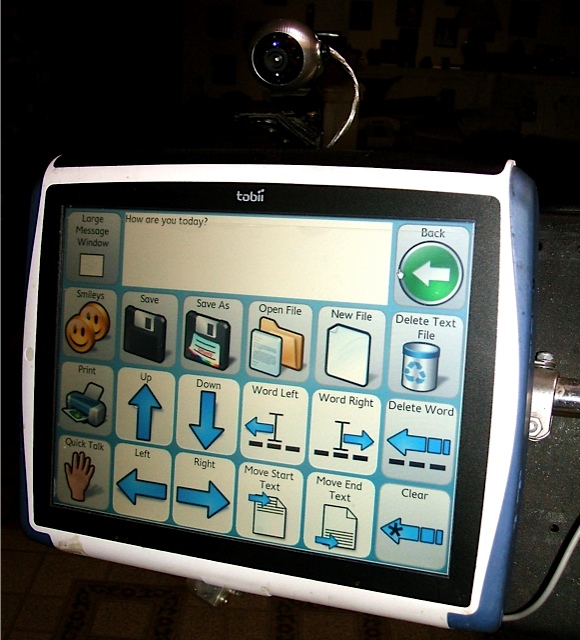
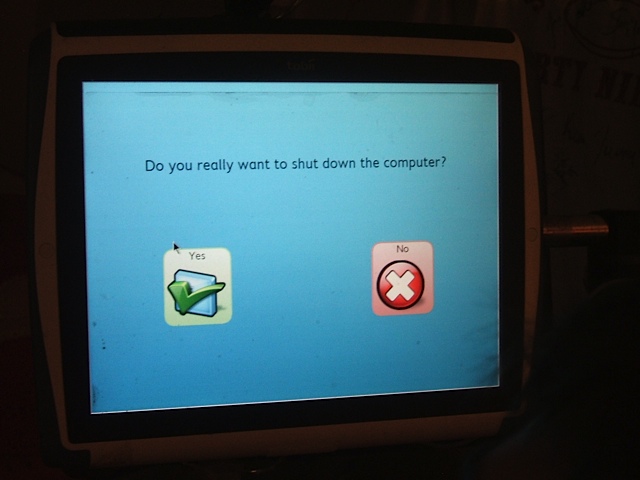
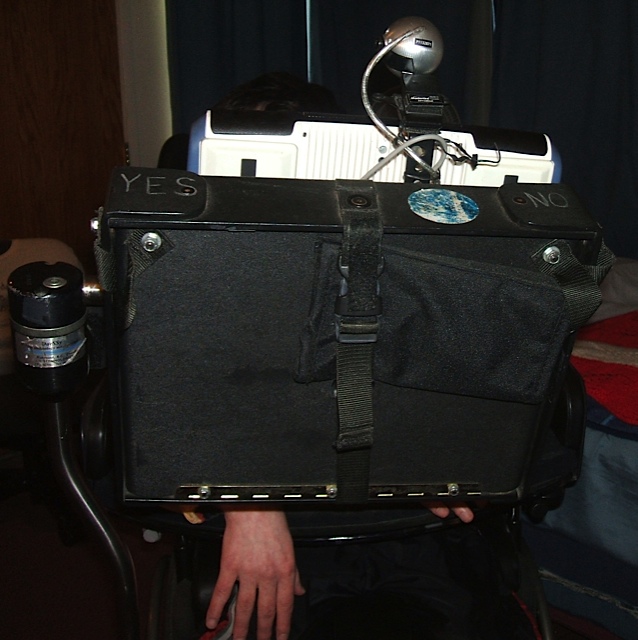
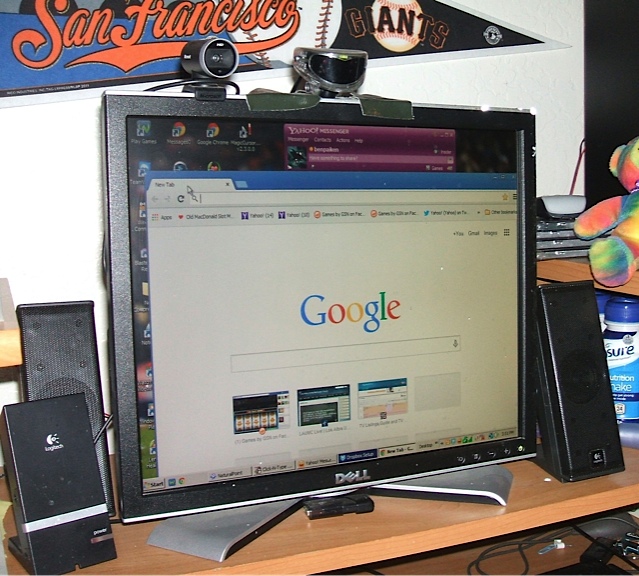 When Ben is home, he uses a desktop and flat screen computer. He doesn’t have speech output on his desktop.
When Ben is home, he uses a desktop and flat screen computer. He doesn’t have speech output on his desktop.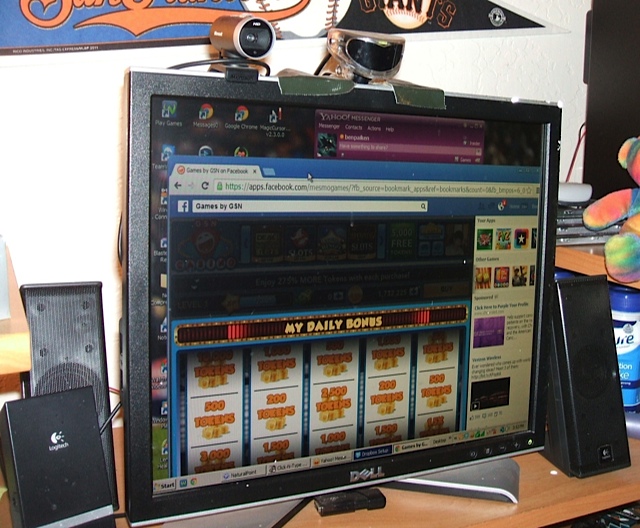
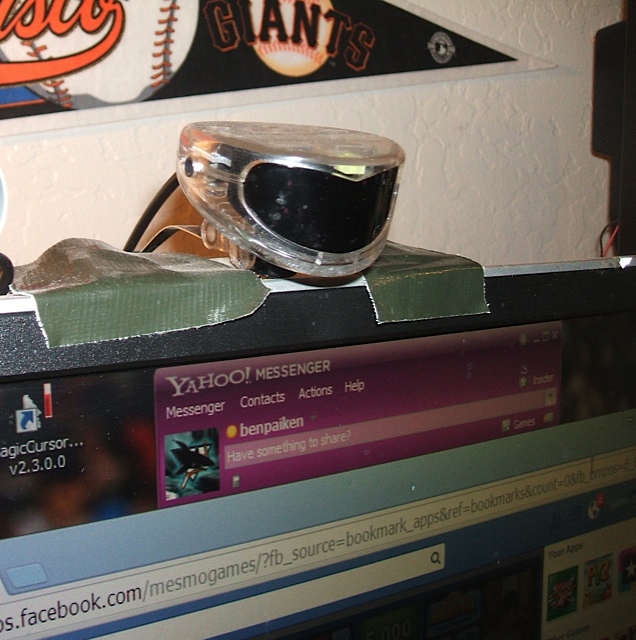
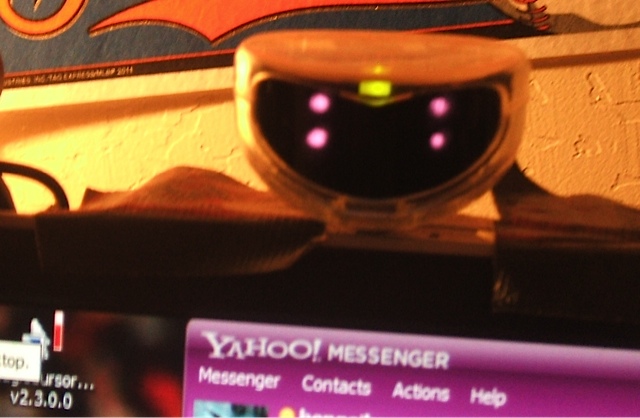 This photo illustrates how the infrared camera looks when the reflective dot reflect back into the camera.
This photo illustrates how the infrared camera looks when the reflective dot reflect back into the camera.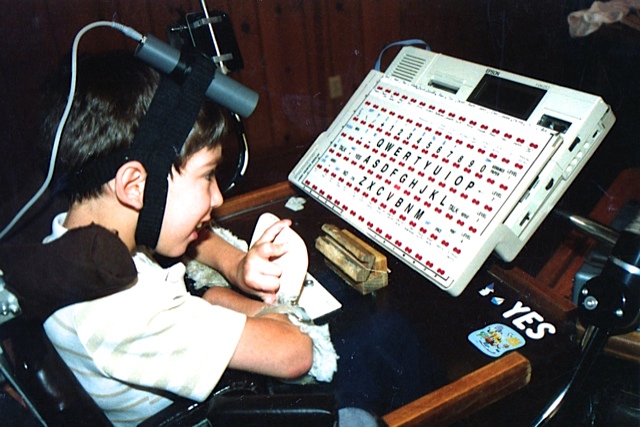
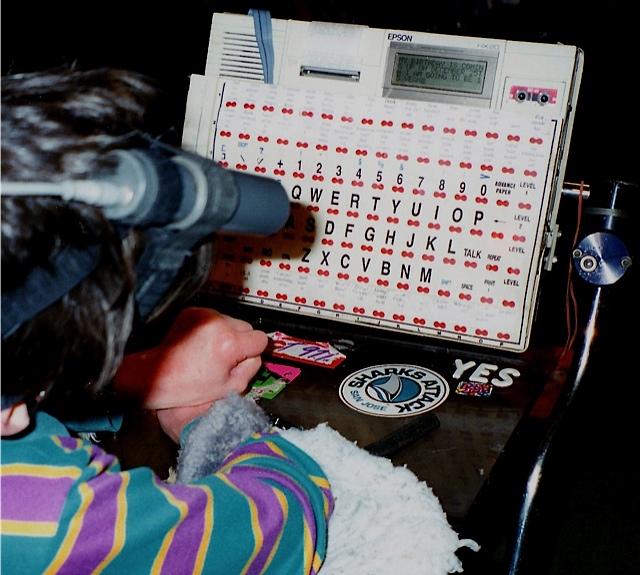
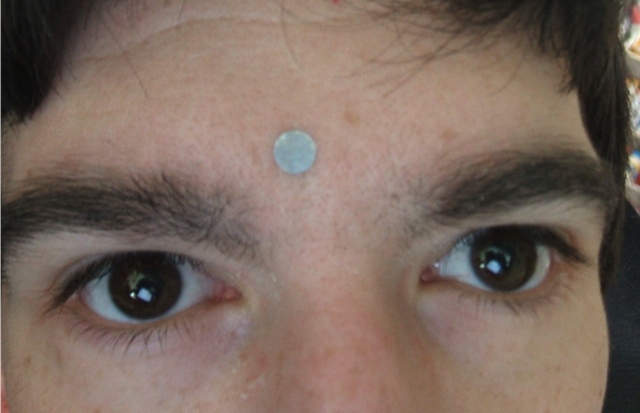
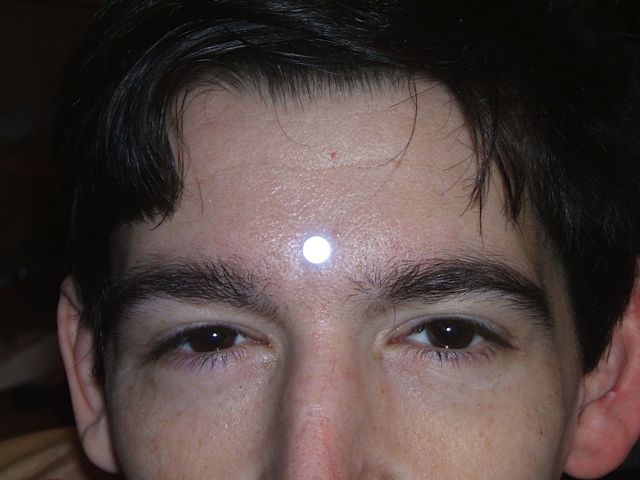
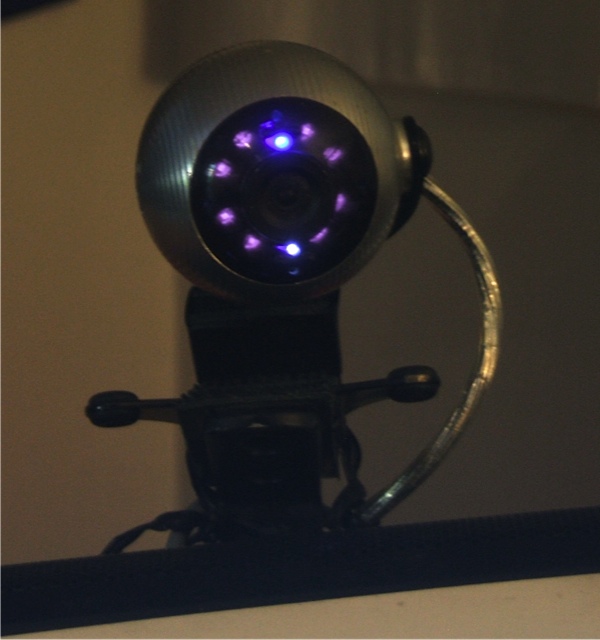

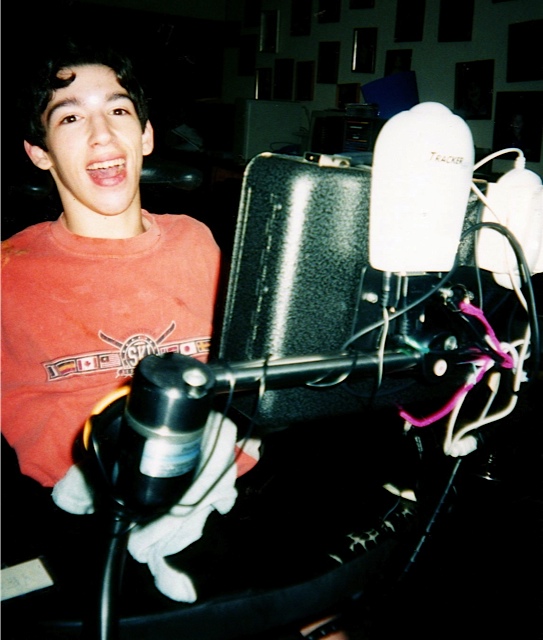

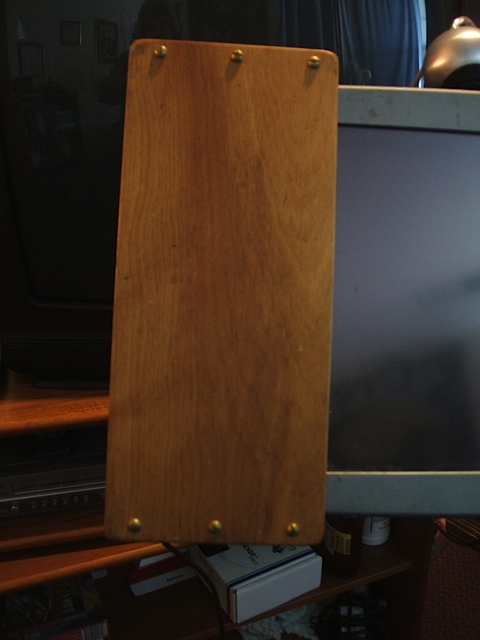
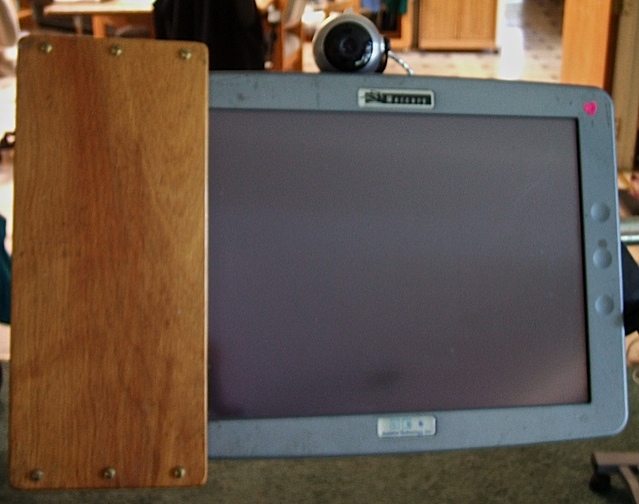
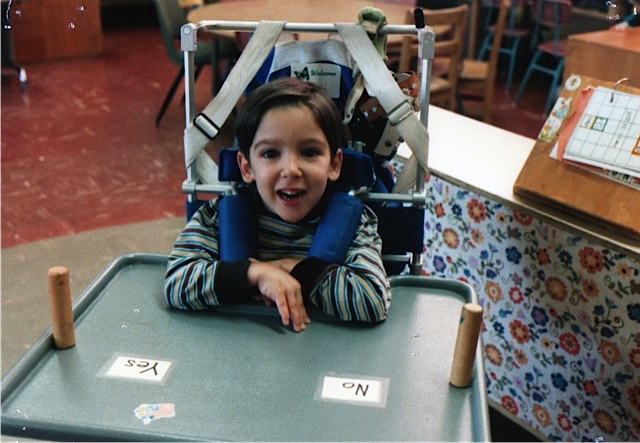
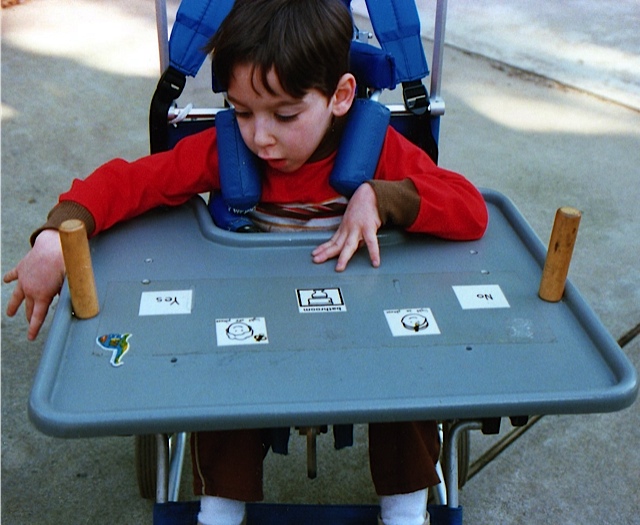 As Ben became more proficient we added more symbols to his tray. Here you can see a couple more: bathroom, drawings to communicate if he wanted his head light on or off. He is using eye gaze in this photo to indicate what he wants to say.
As Ben became more proficient we added more symbols to his tray. Here you can see a couple more: bathroom, drawings to communicate if he wanted his head light on or off. He is using eye gaze in this photo to indicate what he wants to say.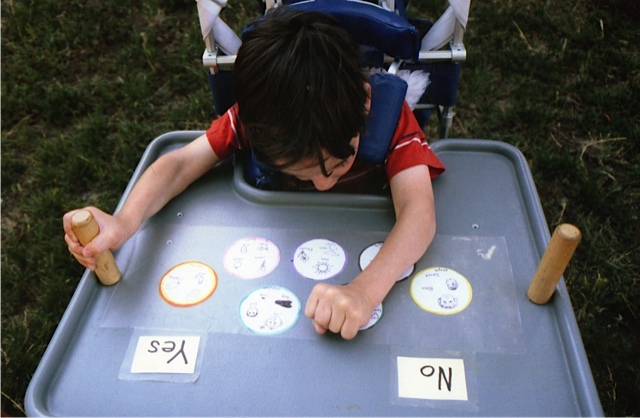 In this picture Ben is attempting to use gross motor skills by placing his fisted hand on the circles on his tray. In the circles are drawings illustrating classifications: foods, activities, people, animals, etc. These allowed Ben to indicate more expanded thoughts about what he wanted. It was still a guessing game of the person communicating asking YES/NO questions and then more specific questions such as, “Do you want to eat a hamburger?” and wait for an answer from Ben. I covered all these pictures with clear contact paper to protect them from dirt, water, and whatever else would come in contact with his wheelchair tray.
In this picture Ben is attempting to use gross motor skills by placing his fisted hand on the circles on his tray. In the circles are drawings illustrating classifications: foods, activities, people, animals, etc. These allowed Ben to indicate more expanded thoughts about what he wanted. It was still a guessing game of the person communicating asking YES/NO questions and then more specific questions such as, “Do you want to eat a hamburger?” and wait for an answer from Ben. I covered all these pictures with clear contact paper to protect them from dirt, water, and whatever else would come in contact with his wheelchair tray.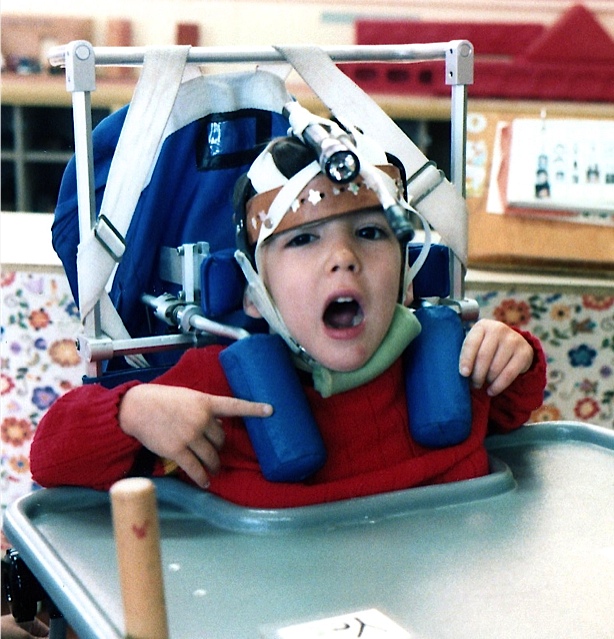 We made a rather crude piece of headgear with a flashlight attached to allow him to keep his head up when communicating. It also was easier than simply following his eye gaze when he would shine the light on objects or icons on his easel board. This was created out of a couple pieces of leather, elastic, Velcro and some foam to help keep it from rubbing under his chin.
We made a rather crude piece of headgear with a flashlight attached to allow him to keep his head up when communicating. It also was easier than simply following his eye gaze when he would shine the light on objects or icons on his easel board. This was created out of a couple pieces of leather, elastic, Velcro and some foam to help keep it from rubbing under his chin.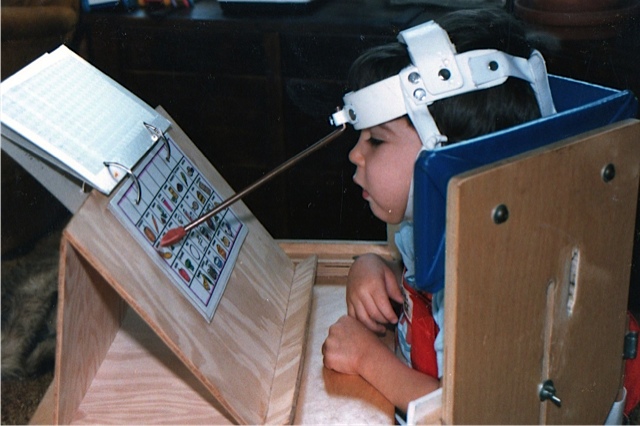 Ben’s intelligence and quick understanding of icons kept us trying to create faster and more accurate methods for him to communicate. My dad made him this easel and I made several classification sheets with small icons. We then constructed this head pointing stick to show us which icon he wanted to use. As great as it looks in this picture, it wasn’t all that great when actually trying to use it because of limited range of his head movements. For example, he could reach the upper two rows of icons but not the bottom two rows unless someone moved the easel back and forth.
Ben’s intelligence and quick understanding of icons kept us trying to create faster and more accurate methods for him to communicate. My dad made him this easel and I made several classification sheets with small icons. We then constructed this head pointing stick to show us which icon he wanted to use. As great as it looks in this picture, it wasn’t all that great when actually trying to use it because of limited range of his head movements. For example, he could reach the upper two rows of icons but not the bottom two rows unless someone moved the easel back and forth.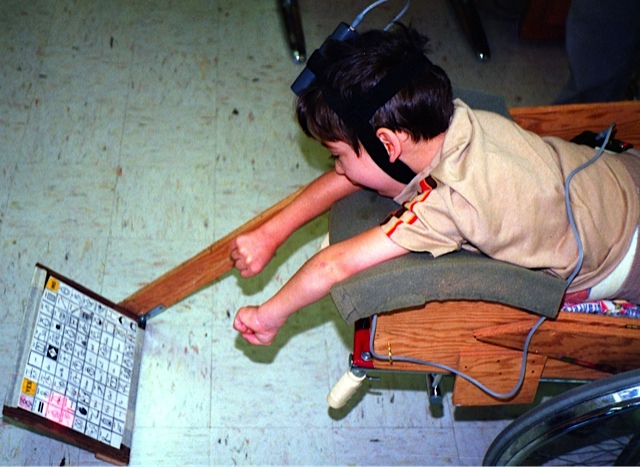 Ben needed to have hip surgery and was in a large spica cast for a long period of time. This prevented him from being able to sit upright in his wheelchair. His teacher helped to develop this communication board that he could use with his light pointer. The long arm was adjustable and could be dropped down when he was placed on his stomach.
Ben needed to have hip surgery and was in a large spica cast for a long period of time. This prevented him from being able to sit upright in his wheelchair. His teacher helped to develop this communication board that he could use with his light pointer. The long arm was adjustable and could be dropped down when he was placed on his stomach.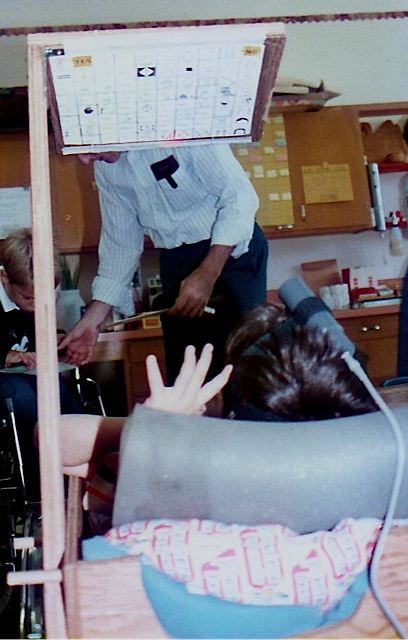 The board could be raised up when he was placed on his back. It was rather tricky for people to see the board when he was on his back. In other words, we had to squat down to see the icons.
The board could be raised up when he was placed on his back. It was rather tricky for people to see the board when he was on his back. In other words, we had to squat down to see the icons.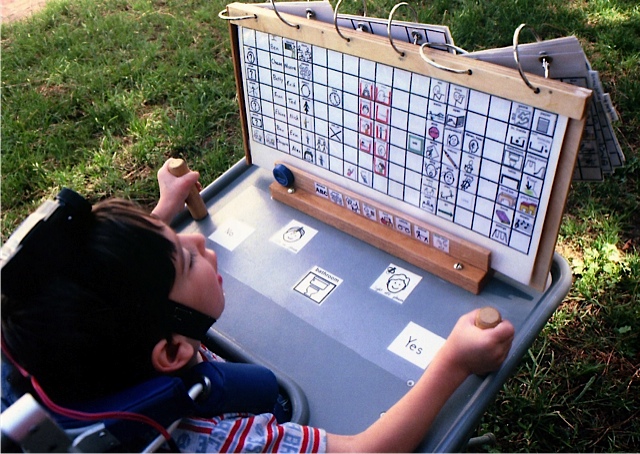 After Ben’s surgery and he was back in his wheelchair, I developed this larger communication board, which he used with his light pointer. The posts on his tray helped him to keep his trunk upright and to make his head steadier to control his light. The sheet that is shown here allowed Ben to construct complete sentences/questions by pointing his light on one icon at a time. The icons were arranged in noun/pronoun, verb (present-past), prepositions, adjectives, and noun order. I made several of these larger sheets which slid in and out behind each other and could be used in his various mainstreamed classes: science, language arts, social studies, etc.
After Ben’s surgery and he was back in his wheelchair, I developed this larger communication board, which he used with his light pointer. The posts on his tray helped him to keep his trunk upright and to make his head steadier to control his light. The sheet that is shown here allowed Ben to construct complete sentences/questions by pointing his light on one icon at a time. The icons were arranged in noun/pronoun, verb (present-past), prepositions, adjectives, and noun order. I made several of these larger sheets which slid in and out behind each other and could be used in his various mainstreamed classes: science, language arts, social studies, etc.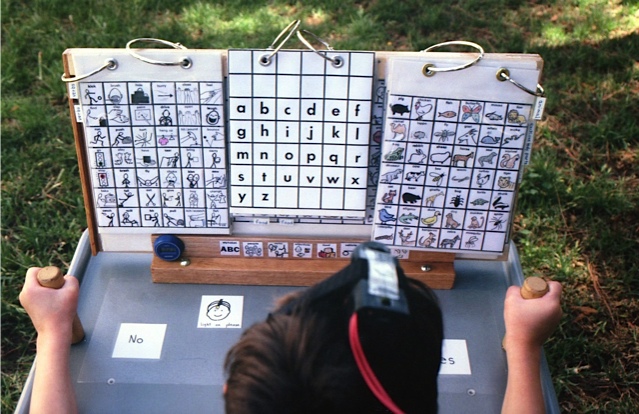 This is the same board with the flip sheets made available. The icons on the sheets were arranged by categories.
This is the same board with the flip sheets made available. The icons on the sheets were arranged by categories.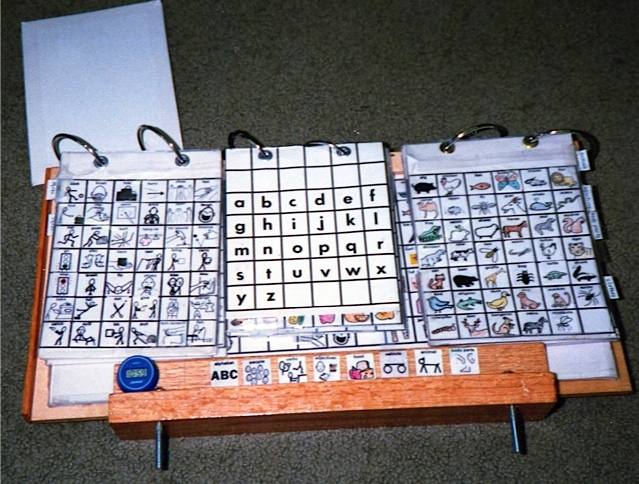 This is a close up of the board. You will notice Ben’s little blue watch stuck on there so he could tell time. He insisted this be placed where he could see it at all times. Then you will see various icons along the bottom on the wood frame. He would point his light on specific icons to let us know which page to flip to – alphabet, people, verbs, foods, etc. Ben had over 600 icons on this board and he made good use of them. Of course there were drawbacks: the listener needed to stand behind Ben to see where the light was being pointed. The listener had to break eye contact when standing behind Ben. Someone had to be able-bodied to flip the sheets and there was no voice. However, the benefits outweighed the drawbacks – Ben could communicate and we could see he was able to develop complex sentences, ask questions, and spell.
This is a close up of the board. You will notice Ben’s little blue watch stuck on there so he could tell time. He insisted this be placed where he could see it at all times. Then you will see various icons along the bottom on the wood frame. He would point his light on specific icons to let us know which page to flip to – alphabet, people, verbs, foods, etc. Ben had over 600 icons on this board and he made good use of them. Of course there were drawbacks: the listener needed to stand behind Ben to see where the light was being pointed. The listener had to break eye contact when standing behind Ben. Someone had to be able-bodied to flip the sheets and there was no voice. However, the benefits outweighed the drawbacks – Ben could communicate and we could see he was able to develop complex sentences, ask questions, and spell.
